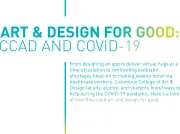
Art & design for good: CCAD & COVID-19


During the early months of lockdown, Master of Fine Arts Professor and Chair Kelly Malec-Kosak spent a lot of time doomscrolling and fretting, watching healthcare workers and wishing she could help but, “weirdly, there didn’t seem to be a need for people who work in metal.” Then she came across the Hand Medal Project, in its early stages. For this project, an international group of more than 1,500 jewelers created ex-votos, offerings given in gratitude or devotion, and delivered them to healthcare workers.
“For me, this type of work is meditative,” says Malec-Kosak. “Jewelry work is repetitive (sawing, filing, sanding), allowing my hands to work while my thoughts wander. I felt like I was putting energy into something that could translate into a physical thank-you.”
Malec-Kosak enjoyed connecting with so many other makers, too. While jewelry is often about the person making it, these medals were designed to be simple for any skill level—to emphasize the collaborative approach—however, many varied their designs just enough (a different ribbon, patina, surface) to individualize it. She loved watching the Instagram feed and gained hope in seeing nurses, doctors, and other healthcare workers located in such places as Spain, Greece, Argentina, and elsewhere—but fighting for all of us—get their medals.
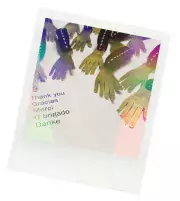

Ventilator shortages were big news at the start of the pandemic, driving creative collaborations among scientists, industrial designers, healthcare professionals, hospitals, universities, businesses, and government entities to manufacture innovative and affordable lifesaving technology. Evo Design, a Newark, Ohio- and Connecticut-based company where CCAD alumni Aaron Szymanski (Industrial Design, 1991) and Taylor Downes (Industrial Design, 2007) are in leadership roles, was one company tapped to manufacture new ventilators from NASA-designed technology.
A team of Evo designers and engineers redesigned, reengineered, and built two versions, one pneumatic and the other compressor-style, of NASA’s prototype ventilator. Evo started the project in March of 2020, and both versions of the ventilator are currently in FDA testing. Once FDA approval is in place, the ventilators will move into production. Besides the ventilators, Evo has developed three types of N95 face masks and packaging for international use. They’ve also developed at-home rapid tests for COVID-19.
“We are a consultancy, so our clients typically drive the project and decision-making process, but our team had free reign on the full commercialization effort,” Taylor says.
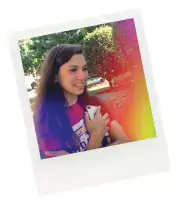

For many, 2020 was a year spent without embracing friends and family. In the spring of 2020, a cohort of passionate CCAD students and faculty with volunteers from the organization Can't Stop Columbus dreamed up an app to help people connect when they can’t connect physically. CCAD students collaborated with local homeless youth shelters, including the Star House and the Huckleberry House, at the onset of the pandemic, asking staff how they could help with sinking morale.
“We heard, ‘Hey, we just want to hug the kids,’” says Assistant Professor John Cairns. “When they arrive, they’re greeted with temperature checks, plastic barriers, masks on—and these are kids coming from a home life that is very difficult or nonexistent. Hugging, embracing, is part of every culture in the world. How do we bring that back?”
Their solution? Design an app. Cairns helped develop the HUGS app as a way to send virtual hugs. App users hold their smartphone to their chest and it vibrates to simulate a heartbeat. The group quickly realized this lack of hugging extended beyond the homeless youth shelters during COVID-induced isolation, and successfully pitched the concept at hackathons, including the Give Back Hack. The project is now run by Mental Health & Overall Well-Being Advocate Mat Hargett from Can’t Stop Columbus and software developer Bryan Gintz of Novvia. Cairns is appreciative of the collaborations the project helped launch.
“It was a great moment in the pandemic,” he says. “It felt good to work together on something at a time when we didn’t know what to do.”

Expressing complicated scientific and medical information in a way that’s easily digestible for the general public can be a daunting task, but it’s one Advertising & Graphic Design Associate Professor and Chair Josh Bodman took on with enthusiasm. He spent the summer of 2020 collaborating with the American Chemical Society and Chemical Abstracts Service on COVID-19-related projects.
“They reached out to me and said, ‘Hey, there’s some crazy stuff going on through the pandemic, we have a lot of content we need to get out, and fast,’” Bodman says.
He worked with a team of scientists, taking complex information and designing graphics, illustrations, info sheets, and other visuals to translate that information and make it easier to understand. Working with the international companies to translate in-person conferences to a webinar format helped Bodman in transitioning to virtual learning this past year at CCAD.
“I was very comfortable working in a virtual component,” Bodman says, “and that was really a benefit.”

In the spring of 2020, as the health benefits of mask-wearing hit the national news cycle, makers of all abilities began sewing handmade face masks to meet surging demand and reserve medical-grade masks for healthcare workers. Jovanna Robinson (Fashion Design, 2009) felt compelled to put her sewing skills to use and set to work designing practical masks with a sense of style. She began making the fashionable masks in superhero and colorful African patterns in mid-April 2020, selling mask and clutch sets alongside her luxury travel bags under the brand Tonē Bekka.
“They sold extremely well,” Robinson says. “The African prints sold the most—people love how colorful they are and the vibrancy of the prints.”
Demand died down by the end of the summer, and while Robinson enjoyed the burst while it lasted she has wrapped up mask production to focus efforts on her travel bags. “I enjoyed doing something I knew was helping to keep people safe,” Robinson says. “Now it’s time to get back to my leather bags and continue to build the brand.”
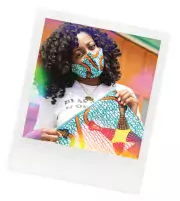

COVID was on everyone’s minds in the fall of 2020, so why not put some of that nervous energy to use creating something new? To kick off the academic year, Adjunct Faculty David Groff assigned his upper-level Illustration students with creating a piece of art for a new game centered around the idea and elements of coronavirus.
For these “quickfire” class projects, Groff typically gives his students three hours to come up with an idea, research, then execute the graphics for an assigned project. This time, students got one week to mull things over for the “COVIDopoly” assignment
“It forces them to make quick decisions and execute and illustrate work quickly, much like real life in the creative business,” Groff says.
Standout projects included a take on the children’s game Simon Says called Dr. Fauci Says, an epidemic-themed version of the board game Clue, and a Nintendo Switch game where players can destroy COVID monsters using the power of rock.
The COVID-19 pandemic has been a once-in-a-lifetime challenge—and one that the CCAD community was uniquely prepared to face. After all, so many CCAD students, their faculty and staff are drawn to the college by a desire and a drive to hone their skills and change the world for the better. And while circumstances such as the ones the world experienced in 2020 and 2021 may not return for many, many years, if ever, creative thinking, compassion, and collaboration will remain at the CCAD’s core for a long time to come.
Learn more about CCAD’s Master of Fine Arts, Industrial Design, Fashion Design, Advertising & Graphic Design, and Illustration programs or apply here.
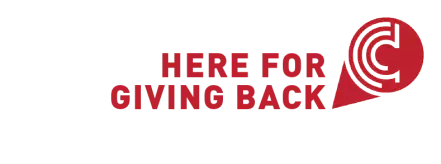
Post date
June 28, 2021